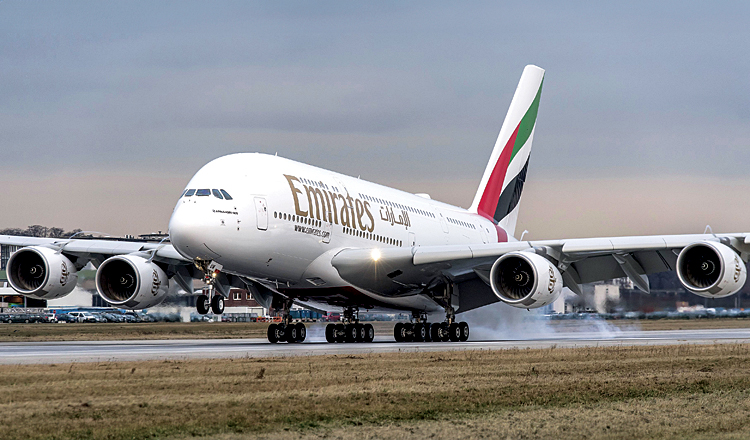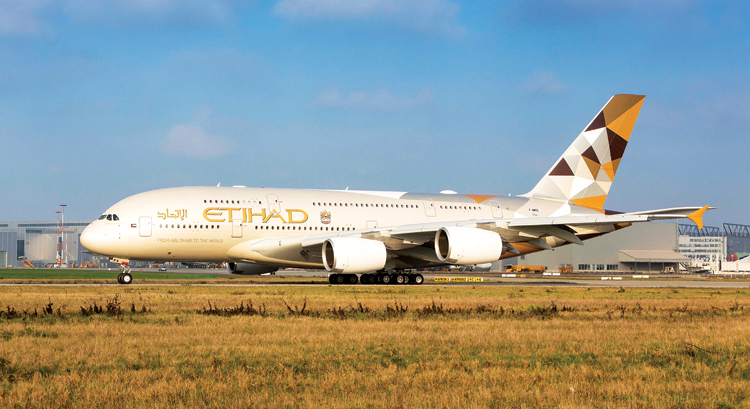INDIAN ARMED FORCES CHIEFS ON OUR RELENTLESS AND FOCUSED PUBLISHING EFFORTS

The insightful articles, inspiring narrations and analytical perspectives presented by the Editorial Team, establish an alluring connect with the reader. My compliments and best wishes to SP Guide Publications.

"Over the past 60 years, the growth of SP Guide Publications has mirrored the rising stature of Indian Navy. Its well-researched and informative magazines on Defence and Aerospace sector have served to shape an educated opinion of our military personnel, policy makers and the public alike. I wish SP's Publication team continued success, fair winds and following seas in all future endeavour!"

Since, its inception in 1964, SP Guide Publications has consistently demonstrated commitment to high-quality journalism in the aerospace and defence sectors, earning a well-deserved reputation as Asia's largest media house in this domain. I wish SP Guide Publications continued success in its pursuit of excellence.
- The layered Air Defence systems that worked superbly, the key element of Operation Sindoor
- Operation Sindoor | Day 2 DGMOs Briefing
- Operation Sindoor: Resolute yet Restrained
- India's Operation Sindoor Sends a Clear Message to Terror and the World – ‘ZERO TOLERANCE’
- Japan and India set forth a defence cooperation consultancy framework, talks on tank and jet engines
Slow Fade of the Four-Engine Airliner
As long-haul international tourism recovers, some leading carriers have been returning their superjumbos to service. The A380 that seemed destined to fade into the sunset has received a new lease of life.

Time was when a four-engine jet airliner was everybody’s idea of the perfect way to reach a dream destination on another continent. Well-heeled travellers loved the ample space and the lavish cocktail lounges and restaurants on the double-decker Boeing 747. First class Emirates passengers on the gigantic Airbus A380 – of which the Dubai-based carrier has the world’s largest fleet of 116 aircraft – could even enjoy an inflight shower.
In fact when the jet age began in 1952, it was with fourengines all the way. The de Havilland Comet, the world’s first jet passenger aircraft, may have been a safety nightmare. But the Boeing 707 that followed in 1958 proved that jetliners could be both safe and successful. All through the 1960s, four-engine airliners or “quads”, such as the Douglas DC-8 and Boeing 707, dominated both the domestic and long-haul airspace because they were seen as safer than twinjets. In fact, United States (US) Federal Aviation Administration (FAA) regulations required twin-engine aircraft to have a diversion airport available within 60 minutes flying time throughout their route. This made them impractical for transoceanic journeys. In the 1960s and 1970s, three-engine planes or “trijets” became popular since they were more economical than quads and their operation was not as strictly limited as that of twinjets. The Boeing 727 trijet introduced in 1964 was highly successful and 1,832 were built.
BOEING’S BIG BET
However, the real revolution in air travel came when Pan Am’s legendary founder Juan Trippe asked Boeing to build a much bigger airliner. When the Boeing 747 “jumbo jet” entered service in January 1970 it was a true game-changer. With its four high-powered turbofan engines and up to 480 all-economy seat capacity, the hump-backed “Queen of the Skies” transformed the economics and reach of passenger aviation. By gathering travellers from many smaller planes into one huge airliner, it helped relieve the congestion at major airports across the globe.
The Boeing 747’s market entry came even as longer routes were being steadily opened up – routes that only big four-engine planes could serve due to the 60-minutes stipulation. Dozens of airlines snapped up the 747, including Air India. Airbus tried to challenge Boeing’s dominance in the long-haul market; but its A380 “Gentle Green Giant” finally entered commercial service only in October 2007. By then, the slow fade of the four-engine fleet was beginning.
FALL FROM GRACE
Fast forward to today, both the Boeing 747 and the Airbus A380 are viewed as something of a liability by many carriers. Compared to the economical modern jets, the quads are fuel-guzzling machines, and inefficient to operate unless practically every seat is filled. Ask any airline executive what a nightmare it can be to find 853 all-economy passengers for a single A380 and you will realise why the Green Giant is not quite an object of desire any more. Seeing the writing on the wall, Boeing ended a prolonged 54-year production run of its 747 in December 2022, with 1,574 aircraft built. Airbus had already closed its A380 assembly line in December 2021 after a 15-year run of a paltry 254 planes. The company has taken a huge $25 billion hit from the programme. What accounts for the fall from grace of these two behemoths?
PRICE OF TWINJET EFFICIENCY
Strangely enough, the responsibility for the decline of the quads rests with Boeing and Airbus themselves. They focussed so much on building efficient twin-engine airliners, that could fly farther for cheaper, that a point came when everyone began to realise that anything four engines could do, two engines could do better. The trend began around 1995 with the introduction of the Boeing 777. This twinjet could carry more passengers than the Airbus A340, and nearly as many as the Boeing 747, but with far lower operating costs. Produced in eight variants so far, the Boeing 777 has already notched up 2,239 deliveries and orders, far outstripping the Boeing 747. The Boeing 777-9 that made its first flight on January 25, 2020, is the world’s longest and largest twin-engine airliner. It is claimed by Boeing to be the most efficient twinjet, “unmatched in every aspect of performance” and is expected to commence commercial service in 2025. The Boeing 787 Dreamliner is another ultra-efficient wide-body twinjet, recording 1,843 orders and deliveries since its introduction in 2011.

Yet another telling illustration comes from Airbus that started development on the A330 twinjet in parallel with the A340 quad, launching both designs in June 1987. The A330 has already recorded 1,810 orders and deliveries – a massive improvement over the A340’s total tally of just 377 – making the A330 the second most delivered wide-body airliner after the Boeing 777. Meanwhile, the A340 quad has itself evolved into the far more efficient A350 twinjet, built as a counter to Boeing’s Dreamliner, and A350 orders and deliveries now stand at 1,072 (all figures are as of November 2023).
REMARKABLE RANGE
In the 1980s, Extended-range Twin-engine Operations Performance Standards (ETOPS) were introduced that permitted twin-engine aircraft operation beyond 60 minutes from a diversion airport at the one-engine inoperative cruise speed, depending on the type’s rating. At one stroke, this opened up the transoceanic space to twinjets, so long as they could meet the necessary technical requirements. The Boeing 767 was the first twinjet to be rated at 120 minutes ETOPS. The ETOPS rating of various airliners continued to increase, with the Airbus A350XWB now permitted 370 minutes. That means the plane can operate practically as the crow flies on any route in the world without altering course to stay close to a diversion. The twinjet Boeing 787 and the A350 now fly on most of world’s longest routes and are swiftly replacing quads as the flagships of choice of most fleets. The Singapore Airlines Airbus A350-900ULR flight from New York to Singapore takes 18 hours 50 minutes to cover the 15,349 km distance, making it the world’s longest flight by distance.
Engine power has also increased tremendously. While the combined thrust of the four Pratt & Whitney JT3D turbojet engines on the Boeing 707 was only 68,000 pounds, a single General Electric GE9X turbofan on the Boeing 777X produces 1,05,000 pounds of thrust. This is what makes it possible for large wide-body airliners to have just two engines.
TWIST IN THE TALE
What then does the future hold for quads? In an age of rising fuel prices and growing concern over climate change, economy and efficiency are the watchwords. Four-engine airliners such as the Boeing 747 and the Airbus A380 were admirably suited to the hub-and-spoke system of airline operation. However, that system has been largely replaced by the point-to-point system, where travellers reach their destination in a single flight instead of two or three, saving both time and money in the bargain. It is unlikely that the hub-and-spoke model will ever find favour again. From purchase price to cost of operation to maintenance, twin-engine aircraft are more economical than quads. Scheduling is also more flexible. Airlines can operate two 787 Dreamliner or A350 flights at different times of the day to suit differing passenger requirements for less than the cost of one Airbus A380 flight.

While quads are highly efficient for very long-range flights with most seats filled, they become uneconomical and major carbon emitters on short-to-medium haul flights. And they need special airport facilities. The COVID-19 pandemic and the consequent plunge in air traffic also accelerated the gradual fading away of the quad.
And yet, could there be a surprise ending to the story? As long-haul international tourism recovers, some leading carriers have been returning their superjumbos to service. The A380 that seemed destined to fade into the sunset has received a new lease of life. This is largely thanks to Emirates. Emirates continues to be the largest operator of the type and has no plans to withdraw the airliner from service for at least another twenty years. The carrier has started operating new A380 airliners with refreshed interiors and the latest luxury seats. Passengers can even check in to the spa during flight and pamper themselves with a set of luxury organic seaweed products. Last year, Emirates CEO Tim Clark also called for the development of a re-engined version of the A380 that could potentially slash fuel emissions by up to 25 per cent, creating a more economical airliner. Should Airbus bite the bait, it could keep the A380 flying for many more years.
Still, the gradual fading away of the quad is perhaps inevitable. No manufacturer has plans to design a new four-engine jet. No airline would wish to have more. A time may come when the Boeing 747 and the Airbus A380 will survive only as cargo or military transport aircraft.





